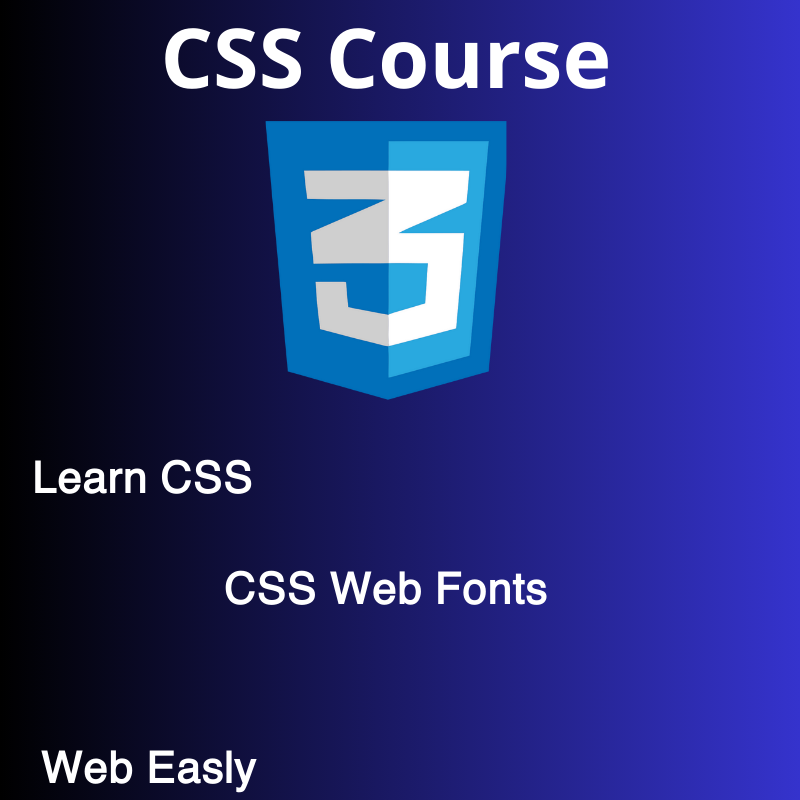CSS Web Fonts

The evolution of web design has come a long way, and one crucial aspect that significantly contributes to a website’s aesthetic appeal is typography. While the choice of fonts was once limited to a handful of web-safe options, the introduction of CSS web fonts has revolutionized the way designers can style text on the web. In this article, we will explore the significance of CSS web fonts and provide practical examples to demonstrate their implementation.
Understanding CSS Web Fonts
CSS web fonts enable web designers to go beyond the standard system fonts, offering a wider range of typefaces to choose from. Unlike traditional fonts that rely on the user’s operating system, CSS web fonts are downloaded to the user’s device, ensuring consistent and visually pleasing typography across different platforms.
Embedding Custom Fonts
To utilize CSS web fonts, designers can embed custom font files directly into their web pages. This can be achieved through the @font-face rule, which allows developers to define font family names and link to the font files.
@font-face {
font-family: 'OpenSans';
src: url('open-sans.woff2') format('woff2'),
url('open-sans.woff') format('woff');
}In this example, the @font-face rule is used to define a custom font family named ‘OpenSans’ and link to the corresponding font files in WOFF2 and WOFF formats. Once declared, designers can apply this font to specific elements in their stylesheets.
Applying CSS Web Fonts
Applying CSS web fonts to HTML elements is straightforward. Designers can use the font-family property to specify the desired font for a particular element or a group of elements.
body {
font-family: 'OpenSans', sans-serif;
}
h1 {
font-family: 'OpenSans', sans-serif;
}In this example, the ‘OpenSans’ font is set as the primary font for the entire body and specifically for h1 elements. The fallback value, sans-serif, ensures that if the custom font is unavailable, the browser will default to a sans-serif system font.
Google Fonts – A Popular CSS Web Fonts Solution
Google Fonts is a widely used platform that simplifies the integration of web fonts. With Google Fonts, designers can easily add a variety of high-quality fonts to their projects without hosting the font files themselves.
Embedding Google Fonts
To use Google Fonts, designers can include a link to the desired font in the HTML <head> section.
<link rel="stylesheet" href="https://fonts.googleapis.com/css?family=Open+Sans">Once the link is added, the font can be applied to elements using the specified font family.
body {
font-family: 'Open Sans', sans-serif;
}Web Fonts in Action
Let’s consider a practical example of how CSS web fonts can enhance the typography of a website.
Example: Fashion Blog
Imagine you’re designing a fashion blog and want to give it a stylish and modern look. You decide to use the ‘Montserrat’ font from Google Fonts to achieve a sleek and sophisticated aesthetic.
<!DOCTYPE html>
<html lang="en">
<head>
<meta charset="UTF-8">
<meta name="viewport" content="width=device-width, initial-scale=1.0">
<title>Fashion Blog</title>
<link rel="stylesheet" href="https://fonts.googleapis.com/css?family=Montserrat">
<style>
body {
font-family: 'Montserrat', sans-serif;
line-height: 1.6;
color: #333;
}
h1, h2 {
font-family: 'Montserrat', sans-serif;
color: #0066cc;
}
p {
font-size: 16px;
}
.quote {
font-style: italic;
}
</style>
</head>
<body>
<header>
<h1>Fashion Forward</h1>
</header>
<main>
<article>
<h2>The Latest Trends</h2>
<p>Explore the hottest fashion trends of the season and stay ahead of the curve.</p>
<p class="quote">"Fashion is not something that exists in dresses only. Fashion is in the sky, in the street; fashion has to do with ideas, the way we live, what is happening."</p>
</article>
</main>
</body>
</html>In this example, the ‘Montserrat’ font is applied to the body, heading elements (h1 and h2), and a specific class (quote) to add emphasis to a quote. The result is a visually appealing and cohesive typography style that complements the theme of the fashion blog.
Conclusion
CSS web fonts have become an indispensable tool for web designers seeking to elevate the visual appeal of their websites. Whether embedding custom fonts or leveraging platforms like Google Fonts, the ability to choose from a diverse range of typefaces enhances the overall user experience. By understanding and implementing CSS web fonts effectively, designers can create websites that not only deliver compelling content but also make a lasting impression through thoughtfully crafted typography.
